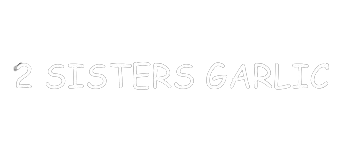Busniess
Ecosystem vs Funnel: Understanding Key Marketing Models

When diving into marketing strategies, you’ll often encounter the terms “ecosystem” and “funnel.” Both are fundamental to understanding how businesses attract, engage, and retain customers, but they represent different approaches. This article breaks down these concepts, comparing and contrasting them to help you determine which model might work best for your business.
What is a Marketing Funnel?
A marketing funnel is a model used to represent the journey of a customer from first learning about a brand to making a purchase. The funnel metaphor suggests that as you move through the stages of the funnel, the number of potential customers narrows.
Stages of the Marketing Funnel
- Awareness: This is the top of the funnel where potential customers first learn about your brand. Marketing activities here include advertising, social media, and content marketing.
- Interest: At this stage, prospects have shown interest and are actively seeking more information. This is where email campaigns and targeted content come into play.
- Consideration: Prospects are evaluating your product or service against competitors. Detailed product descriptions, case studies, and customer testimonials are crucial here.
- Intent: Customers show a clear intent to purchase. Offering promotions, demos, or consultations can help push them towards making a decision.
- Purchase: The final stage where the prospect becomes a customer. The focus is on completing the transaction smoothly and delivering excellent customer service.
- Post-Purchase: Although not always included in traditional funnel models, nurturing post-purchase can lead to repeat business and referrals.
Pros of the Funnel Model
- Clear Structure: Provides a straightforward, step-by-step approach to converting leads into customers.
- Easy Tracking: Metrics at each stage make it easier to measure performance and optimize strategies.
- Focused Efforts: Helps in tailoring marketing efforts to different stages of the customer journey.
Cons of the Funnel Model
- Linear Assumption: Assumes a linear path that doesn’t always reflect the real, often circular nature of customer interactions.
- Limited Engagement: Focuses more on conversion rather than ongoing engagement and relationship-building.
- Short-Term Focus: Can prioritize immediate sales over long-term customer loyalty.
What is a Marketing Ecosystem?
In contrast to the funnel, a marketing ecosystem is a more holistic approach that considers the entire environment in which a customer interacts with a brand. It emphasizes the interconnectedness of various channels and touchpoints.
Components of a Marketing Ecosystem
- Brand Touchpoints: All the points where a customer interacts with a brand, including websites, social media, customer service, and physical stores.
- Customer Journey: A non-linear path that can include multiple interactions before a purchase and beyond.
- Content Streams: Various content types like blogs, videos, podcasts, and social media posts that contribute to the brand experience.
- Social Influence: The role of social proof, reviews, and word-of-mouth in shaping perceptions and decisions.
- Partnerships: Collaborations with other brands or influencers that can expand reach and enhance credibility.
Advantages of the Ecosystem Model
- Comprehensive View: Provides a broad perspective on customer interactions across all channels.
- Enhanced Engagement: Focuses on building relationships and ongoing customer engagement.
- Flexibility: Adapts to the dynamic nature of customer interactions and market changes.
Challenges of the Ecosystem Model
- Complexity: Managing and analyzing multiple touchpoints and channels can be overwhelming.
- Integration Needs: Requires seamless integration across various platforms and technologies.
- Measurement Difficulties: Tracking the effectiveness of a holistic approach can be more challenging compared to the linear funnel.
Comparing Funnel and Ecosystem Models
When choosing between the funnel and ecosystem models, consider your business goals and customer behavior.
1. Customer Journey Perspective
- Funnel: Focuses on a defined path towards conversion.
- Ecosystem: Embraces the entire customer experience, recognizing multiple touchpoints and interactions.
2. Measurement and Metrics
- Funnel: Metrics are straightforward and focused on conversion rates at each stage.
- Ecosystem: Requires more complex analytics to understand the impact of various touchpoints and interactions.
3. Strategy and Execution
- Funnel: Often involves targeted campaigns and promotions aimed at moving customers through stages.
- Ecosystem: Involves a broader strategy that includes content creation, relationship building, and cross-channel integration.
4. Customer Engagement
- Funnel: Primarily focused on moving prospects through to purchase.
- Ecosystem: Aims for ongoing engagement and nurturing of customer relationships beyond the initial sale.
Choosing the Right Model for Your Business
The decision between using a funnel or an ecosystem approach largely depends on your business objectives and the nature of your customer interactions.
- For Businesses Focused on Direct Conversions: The funnel model might be more appropriate as it provides a clear path to track and optimize conversions.
- For Brands Emphasizing Long-Term Relationships: The ecosystem model offers a more comprehensive view of customer interactions and can enhance ongoing engagement and loyalty.
Conclusion: Ecosystem vs Funnel
Both the marketing Ecosystem vs Funnel models have their unique advantages and challenges. Understanding these concepts can help you create a more effective marketing strategy that aligns with your business goals and customer needs. While the funnel model offers a structured approach to conversions, the ecosystem model provides a broader view of customer engagement and relationship building. Ultimately, the best choice depends on your specific marketing objectives and how you want to connect with your audience.
FAQs About Ecosystem vs Funnel
- What is the main difference between the funnel and ecosystem models?
- The funnel model focuses on guiding customers through a linear path to purchase, while the ecosystem model considers all touchpoints and interactions within the broader customer experience.
- Can I use both models simultaneously?
- Yes, many businesses combine elements of both models to benefit from the structured approach of the funnel and the comprehensive view of the ecosystem.
- How do I measure success in a marketing ecosystem?
- Success in an ecosystem is measured through various metrics such as customer engagement, brand sentiment, and the impact of different touchpoints, rather than just conversion rates.
- Which model is better for content marketing?
- The ecosystem model is often more suited for content marketing as it focuses on creating a holistic experience across various channels and touchpoints.
- How can I transition from a funnel-based approach to an ecosystem model?
- Start by expanding your view of customer interactions, integrating various channels and touchpoints, and focusing on building long-term relationships rather than just driving immediate conversions.
Busniess
Delish Menu: The Dishes That Keep Customers Coming Back

What makes a menu truly delish—mouthwatering, memorable, and impossible to resist?
Whether you’re a home chef, restaurant owner, or food entrepreneur, crafting a delish menu is both an art and a science. It’s not just about great flavors—it’s about presentation, balance, and psychology. In this guide, we’ll explore expert-backed strategies to create a menu that delights taste buds and drives repeat business.
1. The Psychology of a Delish Menu
A. The Power of Descriptive Language
Research from Cornell University shows that vivid, sensory-rich descriptions can increase sales by up to 27%. Instead of “Chocolate Cake,” try:
“Decadent Dark Chocolate Fudge Cake with Velvety Ganache & Fresh Raspberry Drizzle”
B. Strategic Placement Matters
-
Eye-tracking studies reveal that customers scan menus in a “Z-pattern”—top-left to top-right, then bottom-left to bottom-right.
-
Place high-margin items in these prime spots.
C. The Rule of Three
People love choices, but too many options cause decision fatigue. Limit categories to 3-5 dishes per section (appetizers, mains, desserts).
2. Balancing Flavors & Textures
A delish menu should offer contrast and harmony. Here’s how:
A. The Flavor Wheel Approach
Mix:
-
Sweet (honey-glazed salmon)
-
Savory (umami-packed mushrooms)
-
Spicy (chili-infused oils)
-
Tangy (citrus-marinated salads)
B. Texture Play
Combine:
-
Crispy (fried shallots)
-
Creamy (avocado mousse)
-
Chewy (slow-cooked brisket)
Example: A delish taco menu might include:
-
Crunchy cabbage slaw
-
Tender pulled pork
-
Creamy chipotle sauce
3. Seasonal & Local Ingredients = Freshness Guaranteed
Today’s diners crave authenticity and sustainability.
A. Farm-to-Table Wins
-
Highlight local suppliers (e.g., “Locally sourced heirloom tomatoes from Green Valley Farms”).
-
Rotate dishes seasonally to keep things exciting.
B. Global Flavors with a Twist
Fusion trends like Korean BBQ tacos or miso caramel desserts keep menus fresh and Instagram-worthy.
4. Pricing Strategies That Feel Delish, Not Dishy
A. The “Decoy Effect”
-
Place a premium-priced item next to a slightly cheaper (but high-margin) dish to make the latter seem like a steal.
B. Avoid Dollar Signs
Studies show menus without “$” symbols lead to higher spending.
5. Visual Appeal: A Picture Is Worth 1,000 Bites
-
High-quality photos of bestsellers boost sales (but don’t overdo it—3-5 images max).
-
Color psychology matters:
-
Red stimulates appetite (great for burgers).
-
Green signals freshness (ideal for salads).
-
6. Real-World Delish Menu Inspirations
A. Sweetgreen’s Seasonal Rotation
Their ever-changing menu keeps customers curious and coming back.
B. The Cheesecake Factory’s Strategic Descriptions
Their detailed, indulgent language makes every dish sound like a must-try.
7. Final Tips for Your Delish Menu
✅ Test & Refine – Use customer feedback to tweak dishes.
✅ Keep It Simple – Focus on quality over quantity.
✅ Tell a Story – Share the inspiration behind a dish.
Conclusion: Ready to Create Your Own Delish Masterpiece?
A delish menu isn’t just about great food—it’s about experience, psychology, and smart strategy. By balancing flavors, using enticing descriptions, and staying seasonal, you’ll craft a menu that keeps customers craving more.
Busniess
Fueling Success: Why Your Choice of Fuel Vendor Matters

In the high-octane world of business, the vendors you choose to supply your essentials can have a dramatic impact on your bottom line and operational efficiency. This is particularly true for enterprises that heavily rely on fuel for transportation, delivery services, agriculture, or construction. The right fuel vendor not only ensures a steady supply of energy but also adds value through superior product offerings and services. Below, we’ll explore the critical factors that make choosing your fuel vendor a decision with far-reaching implications for your business.
The Role of Fuel Quality in Operational Efficiency
Using high-quality fuel is essential for keeping machinery and vehicles running efficiently. It helps improve engine performance, reduces maintenance costs, and minimizes downtime. Poor fuel can cause buildup and engine issues, leading to costly repairs and interruptions in operations. That’s why it’s crucial to choose a reliable fuel vendor that delivers clean, high-performing products.
Trusted vendors also ensure compliance with safety and environmental standards, helping businesses avoid fines and equipment failures. Advanced options like Alberta diesel offer improved fuel economy and engine longevity, making them a smart choice for companies focused on performance and profitability.
Evaluating Fuel Vendor Reliability and Service Consistency
Vendor reliability plays a critical role in maintaining smooth operations by preventing fuel shortages and minimizing disruptions. Evaluating a fuel vendor involves reviewing their history of timely deliveries and ability to meet demand during peak times or unforeseen challenges. Consistent service also includes strong customer support, clear communication, and flexible payment terms, all of which ease procurement and reduce administrative workload.
A dependable vendor is equipped with contingency plans to ensure uninterrupted fuel supply during emergencies or market fluctuations. Value-added services such as fuel management systems, reporting tools, and related products help streamline operations and provide insights into usage, enabling better fuel expense management.
Cost Implications of Fuel Vendor Selection
Fuel costs significantly impact a company’s financial health, making it essential to secure a vendor offering competitive rates. However, low prices alone aren’t enough; hidden costs from poor fuel quality, supply issues, or lack of support services can outweigh savings. Long-term contracts and bulk purchases can help stabilize prices and improve budget predictability.
Negotiated agreements with flexible pricing structures offer protection from market fluctuations. Indirect costs, such as equipment damage from subpar fuel, should also be factored in when evaluating a vendor. A vendor’s supply network plays a critical role in minimizing transportation expenses and improving delivery efficiency, both of which affect a business’s overall operating costs.
Environmental Considerations in Choosing a Fuel Supplier

Fuel consumption’s environmental impact is a growing concern for both businesses and consumers. Partnering with a fuel vendor that emphasizes sustainability helps reduce carbon footprints through cleaner fuel options and regulatory compliance. Vendors investing in biodiesel, ethanol blends, and other alternative fuels show strong environmental commitment while helping businesses meet sustainability targets.
Responsible vendors also adopt green technologies, minimize transportation emissions, and support carbon offset programs, reflecting a broader dedication to eco-conscious operations. These practices can enhance a company’s image and contribute to long-term cost savings through greater energy efficiency. Choosing a fuel vendor with sustainable practices can also open access to tax incentives and government support.
How Fuel Vendor Partnerships Can Enhance Business Growth
Partnering with the right fuel vendor is a strategic advantage that supports business growth. An adaptive vendor can meet evolving demands by increasing fuel volumes, introducing new technologies, and aiding in scaling operations. A strong distribution network enables seamless fuel supply to new locations, which is essential for geographic expansion and maintaining consistent service.
Vendors that provide data-driven insights into fuel usage help businesses boost efficiency, reduce waste, and make informed decisions. Long-term relationships can also foster innovation through collaboration, allowing businesses and fuel suppliers to co-develop tailored solutions. These partnerships leverage shared expertise to drive progress, support operational goals, and keep businesses competitive in a changing market.
Overall, the implications of choosing a fuelvendor extend far beyond a simple transaction. The right partnership impacts operational efficiency, cost management, environmental responsibility, and ultimately, the trajectory of business growth. In gathering insights from this article, business leaders can make an informed decision that will fuel their success for years to come.
Busniess
The Ultimate Guide to Syno Care: Tips and Tricks for Healthy Fish

Welcome to the ultimate guide on Syno Care – your go-to resource for tips and tricks to keep your fish healthy and thriving! Whether you’re a seasoned aquarium enthusiast or just starting out, caring for your aquatic friends is essential. In this blog post, we will explore a range of Syno Care products designed to make fish care easier and more effective. So dive in, swim along with us, and let’s ensure that your underwater companions live their best lives!
Our Products
Looking for top-quality products to enhance your fish care routine? Look no further than Syno Care! Our range of innovative solutions is designed to cater to all your aquatic needs.
First up, we have the Syno care CPAP/BPAP Headgear Replacement, Mask Strap – Black. This accessory ensures a secure and comfortable fit for your fish’s respiratory equipment.
Next, check out the Synocare Humidifier Bottle for Oxygen Concentrator. Keeping oxygen levels optimal in your tank has never been easier with this handy addition.
For those using CPAP machines, the Synocare Nasal Mask offers a snug and leak-proof fit to ensure uninterrupted sleep for both you and your fish.
The Synocare Full Face Mask for Bipap Machine provides comprehensive coverage and comfort during therapy sessions. Your fish will thank you!
Don’t forget about the CPAP Battery Backup Power Bank – perfect for ensuring continuous power supply during emergencies or travel situations.
Last but not least, explore our premium quality Synocare Laryngoscope Set, essential for maintaining your fish’s respiratory health with precision and ease.
Synocare CPAP/BPAP Headgear Replacement, Mask Strap – Black
Are you tired of struggling with uncomfortable headgear for your CPAP or BPAP machine? Look no further than Synocare’s Headgear Replacement Mask Strap in sleek black! Designed for ultimate comfort and durability, this strap is a game-changer for your sleep therapy routine.
Forget about slipping straps or annoying pressure points; the Synocare mask strap ensures a secure fit throughout the night. Made with high-quality materials, it provides gentle support without sacrificing effectiveness. Say goodbye to restless nights and hello to uninterrupted sleep!
The adjustable design caters to all head sizes, offering a personalized fit that stays put no matter how much you toss and turn. With its easy-to-use clips, securing your mask has never been simpler. Enjoy peaceful nights of rejuvenating rest with Synocare’s innovative headgear replacement strap!
Synocare Humidifier Bottle for Oxygen Concentrator
Are you looking to enhance the comfort of your oxygen therapy experience? Look no further than the Synocare Humidifier Bottle for Oxygen Concentrator. This innovative accessory is designed to add moisture to the air delivered by your concentrator, helping to prevent dryness and irritation in your nasal passages.
The humidifier bottle attaches easily to most oxygen concentrators, making it a convenient addition to your respiratory care routine. By introducing humidity into the airflow, it can alleviate symptoms like dry throat or nosebleeds that may occur with prolonged use of oxygen therapy.
Say goodbye to discomfort and hello to a more soothing treatment experience with the Synocare Humidifier Bottle. Breathe easier and feel better with this simple yet effective solution for enhancing your oxygen therapy sessions.
Synocare Nasal Mask for CPAP Machine
Are you struggling to find a comfortable and effective nasal mask for your CPAP machine? Look no further than the Synocare Nasal Mask.
Designed with user comfort in mind, this mask offers a snug fit without compromising on breathability. Say goodbye to leaks and discomfort during sleep – the Synocare Nasal Mask ensures a secure seal throughout the night.
The lightweight and durable materials used in this mask make it easy to wear for extended periods, promoting better compliance with CPAP therapy. Its adjustable straps allow for a personalized fit, catering to individual needs and preferences.
Experience uninterrupted sleep as the Synocare Nasal Mask minimizes noise levels, providing a quiet and restful environment. Improve your overall quality of sleep with this reliable and high-quality CPAP accessory.
Synocare Full Face Mask for Bipap Machine with
Looking for a comfortable and effective solution for your BiPAP machine? Look no further than the Synocare Full Face Mask. Designed to provide a secure fit and optimal seal, this mask ensures that you get the most out of your therapy.
The full face design allows for unrestricted airflow, ensuring that you breathe easily throughout the night. Say goodbye to leaks and discomfort with this innovative mask that is crafted with both functionality and comfort in mind.
Whether you are a back, side, or stomach sleeper, this mask will stay in place all night long. The adjustable headgear ensures a personalized fit for maximum comfort. With the Synocare Full Face Mask, rest assured that your sleep apnea therapy is in good hands.
CPAP Battery Backup CPAP Power Bank
Are you tired of worrying about power outages affecting your CPAP machine’s performance? Look no further than the Synocare CPAP Battery Backup Power Bank. This portable and reliable power source ensures that your therapy continues uninterrupted, even during unexpected blackouts or travels off the grid.
With its lightweight design and long-lasting battery life, the Synocare Power Bank provides peace of mind for CPAP users on the go. Whether you’re camping, traveling, or simply prefer a backup plan at home, this power bank has got you covered.
Say goodbye to disruptions in your sleep therapy with the convenience of the Synocare CPAP Battery Backup. Stay powered up and stay rested wherever life takes you.
Synocare Laryngoscope Set
Are you looking to equip your medical facility with top-quality instruments for airway management procedures? Look no further than the Synocare Laryngoscope Set. This comprehensive set includes a variety of laryngoscope blades and handles designed for optimal performance during intubation.
The high-grade stainless steel construction ensures durability and longevity, making it a reliable choice for healthcare professionals. The ergonomic design offers comfort and ease of use, allowing for smooth insertion and visualization of the airway.
With interchangeable blade sizes, the Synocare Laryngoscope Set caters to diverse patient needs. Whether you are performing routine intubations or dealing with challenging airways, this set provides versatility and precision.
Investing in quality equipment like the Synocare Laryngoscope Set can enhance procedural efficiency and patient outcomes in airway management. Stay ahead in your medical practice with this essential tool kit at your disposal.
Other Products
Looking to enhance your respiratory care routine beyond the basics? Syno Care offers a range of other products designed to complement your CPAP or oxygen therapy experience.
The Syno Care CPAP/BPAP Headgear Replacement is perfect for when it’s time to refresh your equipment. With a snug fit and durable material, this replacement headgear ensures optimal performance.
For those using an oxygen concentrator, the Syno Care Humidifier Bottle is a must-have accessory. Say goodbye to dry air and discomfort with this easy-to-attach bottle that adds moisture for a more comfortable breathing experience.
If you prefer nasal masks for your CPAP machine, Syno Care has got you covered with their specially designed Nasal Mask. Enjoy a secure fit and improved airflow throughout the night.
For users of Bipap machines, the Syno Care Full Face Mask provides full coverage and maximum comfort. Say hello to uninterrupted sleep with this premium mask option.
Explore these additional products from Syno Care to take your respiratory care regimen to the next level!
Synocare CPAP/BPAP Headgear Replacement, Mask Strap – Black
Are you tired of struggling with uncomfortable headgear while using your CPAP or BPAP machine? Say goodbye to discomfort and hello to the Synocare CPAP/BPAP Headgear Replacement Mask Strap in sleek black! This innovative product is designed for ultimate comfort and stability, allowing you to sleep peacefully without any distractions.
The adjustable straps ensure a perfect fit for every user, eliminating any slipping or sliding during the night. Made from high-quality materials, this mask strap is durable and long-lasting, providing you with reliable support for your respiratory therapy needs.
Experience the difference with Synocare’s attention to detail and commitment to quality. Upgrade your CPAP or BPAP experience today with the Synocare CPAP/BPAP Headgear Replacement Mask Strap – Black.
Synocare Humidifier Bottle for Oxygen Concentrator
Introducing the Synocare Humidifier Bottle for Oxygen Concentrator! This innovative accessory is designed to enhance the moisture levels of your oxygen therapy, ensuring a comfortable and effective experience.
The humidifier bottle attaches easily to your oxygen concentrator, providing a steady flow of humidified air to help prevent dryness in your nasal passages and throat. Say goodbye to discomfort and hello to improved comfort during your therapy sessions.
With its user-friendly design, the Synocare Humidifier Bottle is simple to fill and clean, making maintenance a breeze. Its durable construction ensures long-lasting performance, giving you peace of mind as you focus on your health and well-being.
Experience the difference with the Synocare Humidifier Bottle for Oxygen Concentrator – because when it comes to your respiratory care, every breath matters.
Synocare Nasal Mask for CPAP Machine
The Synocare Nasal Mask for CPAP Machine is a game-changer when it comes to ensuring a comfortable and effective sleep therapy experience. Designed with precision and user comfort in mind, this mask offers a secure fit without compromising on breathability. Say goodbye to uncomfortable pressure points or leaks that disrupt your restful night’s sleep.
Crafted from high-quality materials, the Synocare Nasal Mask is lightweight yet durable, making it ideal for extended use. The adjustable headgear ensures a customized fit for every user, promoting uninterrupted therapy sessions throughout the night. Its sleek design also minimizes facial marks and discomfort commonly associated with traditional masks.
Experience enhanced therapy compliance and overall well-being with the Synocare Nasal Mask for CPAP Machine. Prioritize your sleep health today by investing in quality equipment that puts your needs first.
Synocare Full Face Mask for Bipap Machine with
Are you looking for the ultimate solution to enhance your sleep therapy experience? Look no further than the Synocare Full Face Mask for Bipap Machine. This innovative mask is designed with comfort and functionality in mind, ensuring a restful night’s sleep.
The full face design provides a secure fit while allowing for natural airflow, reducing discomfort and ensuring maximum effectiveness of your BiPAP therapy. Say goodbye to leaks and discomfort with this advanced mask that prioritizes user comfort above all.
Crafted from high-quality materials, the Synocare Full Face Mask is durable and long-lasting, making it a reliable choice for your sleep apnea treatment needs. Its user-friendly design allows for easy adjustment and customization to suit individual preferences.
Experience uninterrupted sleep with the Synocare Full Face Mask for Bipap Machine. Say hello to quality rest and goodbye to restless nights – try it today!
Conclusion
In the world of fish care, Syno Care stands out as a reliable and trusted brand offering a range of products to keep your aquatic friends healthy and happy. From CPAP/BPAP headgear replacements to laryngoscope sets, Syno Care has you covered with top-quality items designed to meet your needs.
Remember, maintaining the health of your fish is essential for their well-being. By incorporating these tips and tricks into your routine and utilizing Syno Care products, you can ensure that your fish thrive in their environment. So go ahead, give your fish the care they deserve with Syno Care!
-

 Articles3 months ago
Articles3 months agoHow Many Times Can You Regrow Green Onions
-

 News10 months ago
News10 months agoUnderstanding HotLeaks: What You Need to Know
-

 Fashion8 months ago
Fashion8 months agoOpals in the USA: A Gemstone Transforming the Crystal Healing Market
-

 Entertainment7 months ago
Entertainment7 months agoHow to Use Snaptik: A Complete Guide to Download TikTok Videos
-

 Technology1 year ago
Technology1 year agoThe Wonders of Oh Em Gee Blog
-

 Entertainment1 year ago
Entertainment1 year agoBare it All: Unforgettable Skinny Dipping Stories Shared
-

 Health1 year ago
Health1 year agoCan You Smoke Shrooms? Exploring the Myths and Realities
-

 Articles5 months ago
Articles5 months agoWHAT IS THE DIFFERENCE BETWEEN SEED GARLIC AND FOOD GARLIC?
